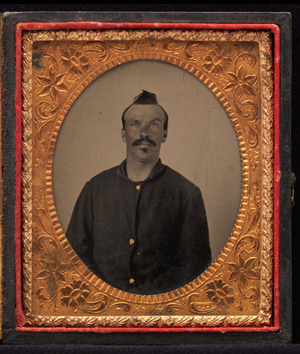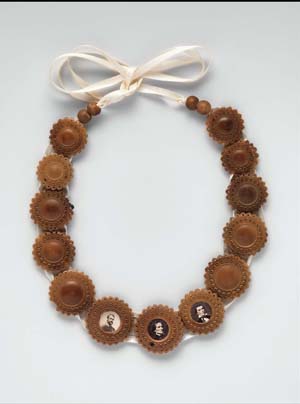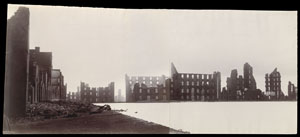Photography during American Civil War
Landmark Metropolitan Museum Exhibition Considers Evolving Role of Photography during American Civil War
(April 2–September 2, 2013)

More than 200 of the finest and most poignant photographs of the American Civil War have been brought together for the landmark exhibition Photography and the American Civil War at The Metropolitan Museum of Art. The camera recorded from beginning to end the heartbreaking narrative of the four-year war (1861–1865) in which 750,000 lives were lost.
The exhibition is made possible by The Horace W. Goldsmith Foundation.
Photography and the Civil War includes: intimate studio portraits of armed Union and Confederate soldiers; battlefield landscapes; rare multi-panel panoramas of Gettysburg and Richmond; diagnostic medical studies of wounded soldiers; and portraits of Abraham Lincoln as well as his assassin John Wilkes Booth. The work of some four dozen named individual photographers and photographic studios, and countless unknown artists is shown.
The exhibition features groundbreaking works by Mathew B. Brady, George N. Barnard, Alexander Gardner, and Timothy O’Sullivan, among many others. It examines the important, if generally misunderstood, role played by Brady, perhaps the most famous of all wartime photographers, in conceiving the first extended photographic coverage of any war.
Among the many highlights of the exhibition is a superb selection of early wartime portraits of soldiers and officers who sat for their likenesses before leaving their homes for the war front. The rarest are ambrotypes and tintypes of Confederates from the renowned collection of David Wynn Vaughan, who has assembled the country’s premier archive of Southern portraits. These seldom-seen photographs, and those by their Northern counterparts, balance the well-known views of battlefields, defensive works, and the specialized equipment of 19th-century war.
The exhibition also investigates the relationship between politics and photography during the tumultuous period and presents exceptional political ephemera from the private collection of Brian Caplan, including: a rare set of campaign buttons from 1860 featuring original tintype portraits of the candidates; a necklace with photographic portraits of Confederate President Jefferson Davis and two members of his cabinet; and an extraordinary game board composed of photographic likenesses of President Lincoln and his generals. An inspiring carte de visite portrait of Sojourner Truth is also shown. A former slave from New York State, she sold photographs of herself to raise money to educate emancipated slaves, and to support widows, orphans, and the wounded. Finally, the exhibition includes the first photographically illustrated “wanted” poster, a printed broadside that led to the capture John Wilkes Booth and his co-conspirators after the assassination of President Lincoln in April 1865.
The exhibition is accompanied by a fully illustrated catalogue by Jeff L. Rosenheim.

The catalogue is made possible by the Roswell L. Gilpatric Publications Fund.
A special feature about the exhibition will appear on the Metropolitan Museum’s website ( www.metmuseum.org). For more information, call (212) 535-7710.
The exhibition will be shown at the Gibbes Museum, Charleston, (September 27, 2013–January 5, 2014), and the New Orleans Museum of Art (January 31–May 4, 2014).


